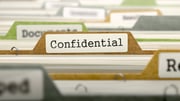Sign up for a free demo!
- Excelforce
- Industry Insights
- Defend Your Orginization with Personnel Files
Defend Your Orginization with Personnel Files
By: Jay Mittelman
Your personnel files can make you or break you in court and in unemployment hearings. So one way to guard against losing money — big money — in employee legal actions and unemployment cases is to maintain well-documented personnel files.

Accuracy Cuts Costs You can cut costs by reducing the chances of errors in personnel records and by making sure supporting documentation is in personnel records. Example: The file of a terminated employee fails to contain documentation for reasons for the firing. This absent documentation will increase the chances that you will lose in an unemployment hearing and pay out thousands of dollars needlessly in unemployment benefits. |
Here’s one example: In wrongful discharge decisions, some courts have said you must prove good faith by showing you tried to improve your employee’s performance and that the employee didn’t cooperate or respond to your efforts.
You can do this best by keeping complete, up-to-date, factual accounts and records of your employees’ work.
Begin each employee’s file with the job application itself, a resume or other pre-employment information. Include starting date and payroll data. During employment, include dated copies of written evaluations, notes or memos. Keep anything related to job performance.
Also, keep a record in the same file of your efforts to improve the employee’s work. If you made specific recommendations to the employee, keep a copy in the file.
If you initiated some type of one-to-one contact to help the employee, keep careful notes as to the progress that was made.
If the employee was given a deadline for improvement, make sure the deadline was reasonable.
If you ever have to fire someone, this documentation in the personnel file will be your best defense.
But perhaps more important in the long run, employees work better when they know what to expect, when there are no surprises.
Careful recordkeeping and good communication with employees are musts for a productive workplace and they will help keep you out of court, too.

